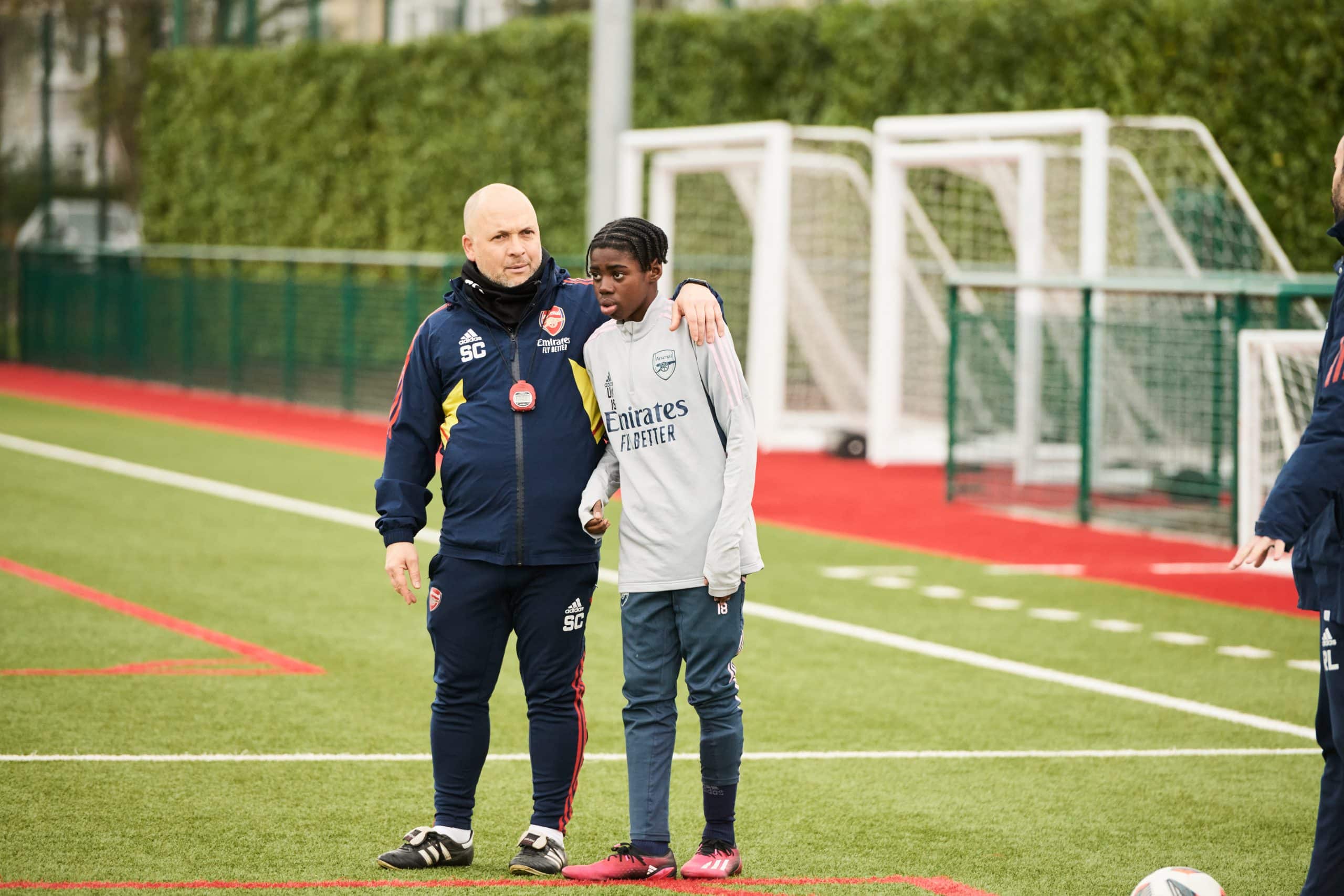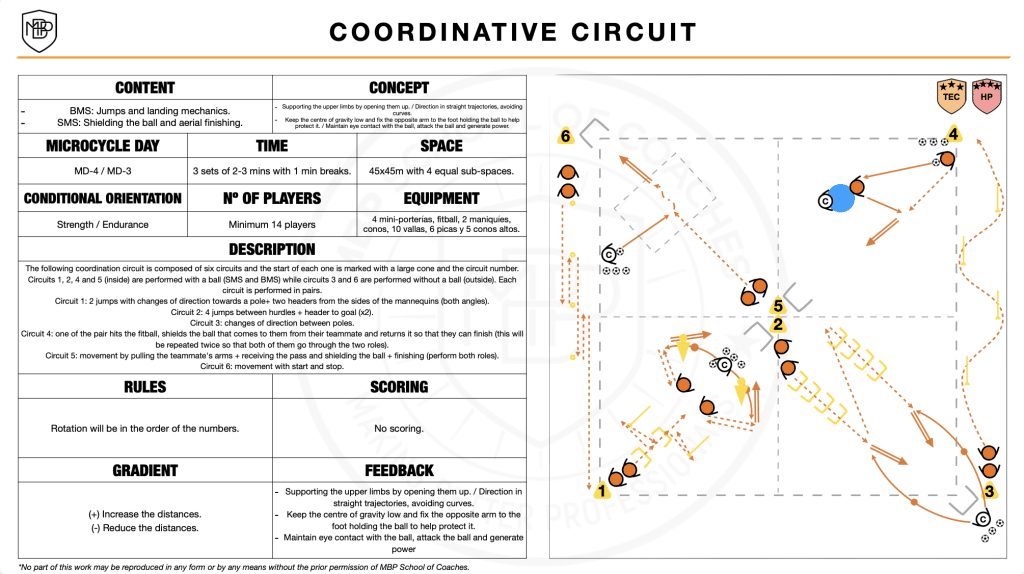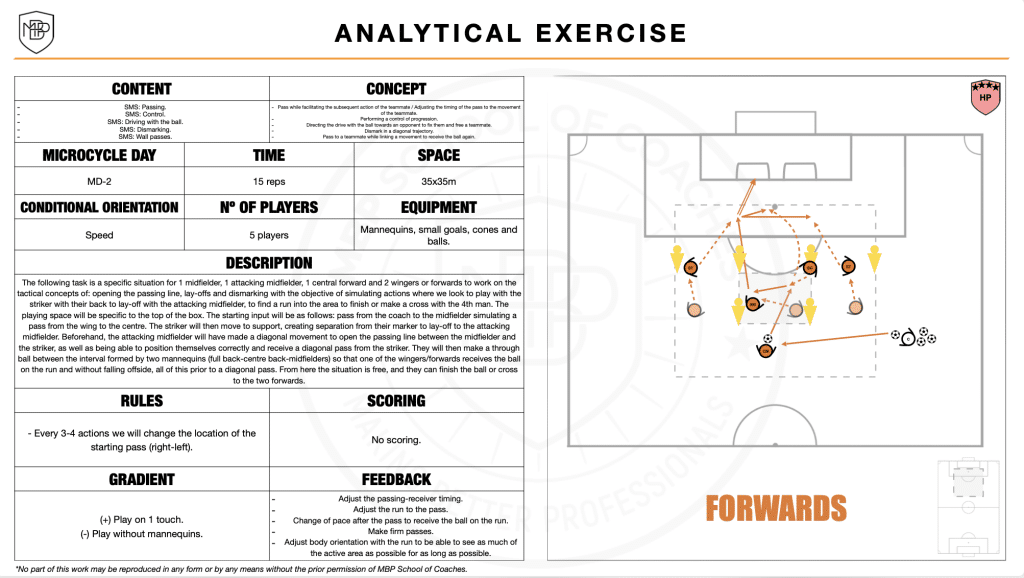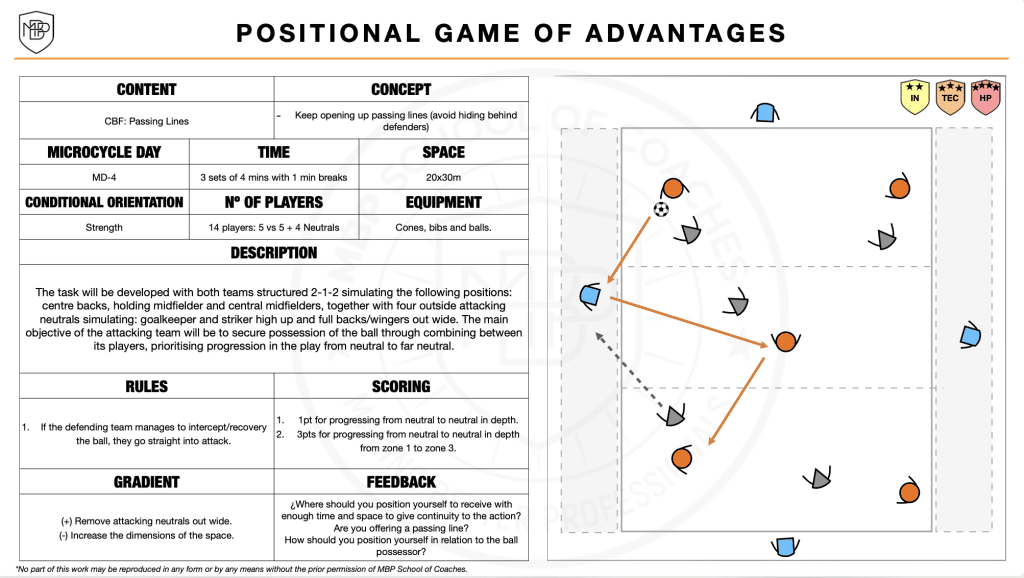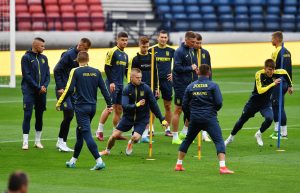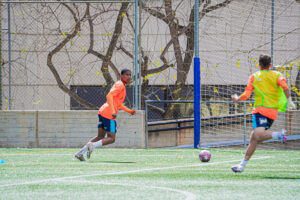While it is true that creating training tasks is an important aspect for any coach, so is the communication style with players during sessions.
What kind of message do you usually use in your coaching tasks? Do you usually give the solution to your players or do you ask them questions? If you are one of those who gives them the answer to the game situation, you are using the direct command style. On the other hand, if you use questions for them to find the solution, you are using guided discovery. Let’s analyse which of the two styles is more useful.
1. Direct Command
Direct command is a teaching style in which the coach gives direct orders to the players to solve game situations without them having to think about the solution. They only execute.
This teaching style can be useful especially in three situations, which are described below:
Situation 1. On the one hand, it will be used in the organisational phase of the tasks, i.e. during the time when we are reminding the players of the rules and scoring system of an exercise or game. In this way we can make sure that the players understand how it works.
Situation 2. Moreover, it is highly recommended in the work on coordination skills, as these aim at an efficient reproduction of specific movements by the players and not at an analysis of game situations. Let’s look at an example of a training task.
Image 1. Ejemplo de un circuito coordinativo para entrenar los saltos y los desplazamientos (HMB), y la protección de balón (HME). Source: MBP
In the example above, you can see how the feedback from the coach focuses directly on what the players have to do and how to move faster and protect the ball taking into account the body position in relation to it.
Situation 3. Finally, it will be useful in analytical exercises and pattern work, as they will be tasks where the aim is for players to quickly internalise playing concepts, both at a coordination level and in terms of concepts of the game, such as actions from the match plan. Below, we show an example of each type of didactic strategy:
Images 2 and 3. Analytical exercise to train shooting in a coordinated way and pattern work to introduce the creation and occupation of spaces. Source: MBP
2. Guided Discovery
Guided discovery aims to enhance the mental processes of the players and thus develop their level of understanding of the game. To do this, the coach should ask questions during the tasks so that the players can find the solution with the help of the coach.
This style of teaching will be useful when we are going to train tactical content, precisely where the players have to interpret different game situations. For this purpose, we can ask two types of questions:
Open Questions: These questions will be less specific and can be used with players who have a higher level of understanding of the game. For example: ‘Where is the free space?’, ‘Which teammate is free?’, ‘When is the best moment to dismark? Why?’.
Closed Questions: These questions are more specific than the previous ones and are more recommendable for players with a lower level of knowledge of the game or who are just starting out in sport. For example: ‘Where is the free space? To the right or to the left?’, ‘Which teammate is free, the full back or the centre back?’, ‘When is the best moment to get free, when does the defender look at you or at the ball?
Finally, whether the questions are more open or closed, they should revolve around the concept we are training, so that the players can learn it.
Image 4. Example of a Position Game of Advantages to train Passing Lines Source: MBP
All in all, it is clear that the aim of direct command is to get players to quickly reproduce what we are looking for. Furthermore, it will be more effective for them to recall how the scing and rules of the tasks work, and also for training coordinative skills. Guided discovery, on the other hand, will allow us to focus on tactical aspects of the play and enable players to reflect on possible solutions to game situations. Therefore, both will be very useful in our training sessions, always depending on the type of content we want to train.
Do you want to acquire more tools to improve as a youth coach?
In the Online Expert in Youth Football course, you will learn to identify the main characteristics of youth players and to classify them according to their level of game understanding. All this will allow you to select the most appropriate training content according to their needs and, consequently, learn how to design training sessions and tasks that respect and favour their learning processes in order to, over time, help develop better players.

